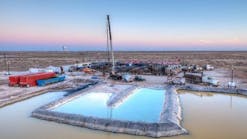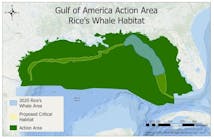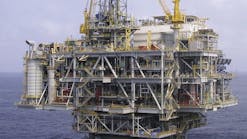Tom Huizinga
Shell Internationale Petroleum Mij.
The HagueJos M.H. Theunissen
Rayong Refinery Co. Ltd.
Rayong, ThailandHans Minderhoud, Rob van Veen
Koninklijke/Shell-Laboratorium
Amsterdam
An improved, second-stage hydrocracking catalyst has been developed by combining stabilized Y zeolites with amorphous silica alumina cracking components.
A commercial application of this catalyst, along with a new, first-stage zeolitic hydrocracking catalyst, resulted in increased unit throughput and cycle length.
HYDROCRACKING
Shell Internationale Petroleum Mij. estimates that, worldwide, 115 hydrocrackers are processing 130 million metric tons/year (mty), or 2.5 million b/d of feed. Fig. 1 (54584 bytes) shows the distribution of hydrocracking capacity, by region.
As a process, hydrocracking is growing rapidly. Current construction plans could increase global capacity to 176 million mty (3.4 million b/d). This growth is not expected to occur in the U.S., but rather in the Far East.
Hydrocracking plays a diverse role in refineries; feedstocks and products can vary considerably (Fig. 2 (77458 bytes)). Originally, light vacuum gas oils and catalytic cycle oils were hydrocracked to produce mostly gasoline.
But several shifts have occurred: feedstocks are heavier, and product slates have shifted from gasoline or reformer feedstock to middle distillates (jet-Al and atmospheric gas oil). Furthermore, the hydrocracking unit can make excellent products for further downstream processing, such as in an olefin or lube oil plant.
In all cases, hydrocracked products are environmentally desirable because they are low in aromatics (depending on unit pressure level) and low in hetero atoms (sulfur, oxygen, and nitrogen).
Hydrocracking is a complex application of heterogeneous catalysis. The economics of such action are determined by the local environment. In this case, the East-of-Suez location is characterized by rapidly growing demand for oil products (Fig. 3).
Fig. 3(48196 bytes) shows that demand for middle distillate in the region is growing faster than that for naphtha, which affects product prices. Therefore, an increase in middle distillate selectivity will further increase the operating margin of the hydrocracker.
Another way to increase unit margin is to increase throughput, which also increases production rates of middle distillate.
FIRST-STAGE CATALYSTS
Although the emphasis in first-stage hydrocracking historically has been placed on hydrotreating the feedstock, additional cracking of the feed before second-stage cracking is not uncommon.
With the usual pretreatment catalysts, however, this is cumbersome.
One option available for enhancing conversion is using a stacked bed in the first stage, with a pretreatment catalyst in the top portion and a zeolitic cracking catalyst in the bottom. This configuration is commercially attractive, provided the zeolitic catalyst is not too sensitive to organic nitrogen poisoning. Otherwise, such contamination can cause high apparent activation energies, eventually requiring different quench strategies.1
Thus, to reduce sensitivity to nitrogen, the zeolitic catalyst needs to have high hydrodenitrogenation activity. Other requirements for first-stage catalysts are comparable to those for second-stage catalysts.
An optimum has to be found in the trade off between high activity and high middle distillate selectivity. In addition, the hydrogenation function has to provide sufficient aromatics saturation activity and catalyst stability.
These requirements led to the development of a new catalyst, called Z-713. The physical properties of this catalyst are:
- Compacted bulk density, 821 kg/cu m
- Average particle diameter, 1.65 mm
- Average particle length, 4.34 mm
- Surface area, 244 sq m/g
- Hg pore volume, 0.44 MI/g
- Water pore volume, 0.51 ml/g
- Average pore size, 10.2 nm
- Side crush strength/1., 269 N/cm
- Bulk crush strength, 2.20 MPa.
For a typical first-stage bottom bed operation, Z-713 has, like the high-zeolite Z-703 catalyst, a considerable cracking activity advantage, compared to a pretreatment catalyst. Table 1 (21628 bytes) shows typical feedstock properties and catalyst performance for first-stage bottom bed operation.
Z-713's nitrogen sensitivity is much less than that of Z-703, as is indicated by their apparent activation energies. Furthermore, Z-713 is more middle distillate selective and, in particular, more gas oil selective.
The improved hydrogenation function of Z-713 also is reflected in its long-term stability, as shown in Fig. 4 (32315 bytes). In integrated, stacked-bed experiments, the stacked bed comprising C-424/Z-713 showed significantly more-stable operation than that of C-424 alone or the C-424/Z-703 combination.
SECOND-STAGE CATALYSTS
It is well known that high-zeolite hydrocracking catalysts usually have high cracking activities in second- stage hydrocracking. But they also often maximize naphtha production.
Hydrocracking catalysts containing only amorphous silica- alumina (ASA), on the other hand, show the reverse trend. They require much higher temperatures to achieve the same conversion level, although their product breakdown is considerably more middle distillate selective (Fig. 5 (33069 bytes)).
Another important difference between zeolitic (generally, zeolite Y) and ASA catalysts is their ability to convert bulky feed molecules, which are present mainly in the heavy tail of the feedstock.
Because of the relatively small size of the zeolite Y pores, these heavier multiple-ring molecules are sterically hindered, which limits their penetration into the pore system. Hence, these compounds show low apparent reactivity. In recycle mode, this can pose serious problems because there refractory compounds can build up.
Amorphous catalysts, with their large pore system, on the other hand, show no restricted accessibility and therefore are, in principle, better suited for converting heavy ends.
The ratio of the reaction rate constant associated with cracking 540+ C. feed components to the rate constant for 370+ C. feed components is indicative of a catalyst's heavy- ends conversion ability. Table 2 compares catalyst conversion ability, as a rate-constant ratio, for a second-stage feedstock.
In this respect, ASA performs better. This different behavior of zeolitic and ASA catalysts is more obvious when comparing field ionization mass spectrometry (FIMS) measurements of the unconverted part of the feed (Figs. 6 (28834 bytes) and 7 (24036 bytes)).2
FIMS demonstrates that the all-zeolite catalyst (Z-703) does not readily convert high-boiling-point (high-carbon- number) material with low Z numbers. All-amorphous catalyst, on the other hand, does readily convert these materials-it even has a preference for them.
("Z number" refers to the value of Z in the generic for- mula CnH2n+z. Compounds with high Z numbers are highly polynaplathenic. For paraffins, Z = 2; for 1-ring naplathenes, Z = 0; for 2-ring naphthenes, Z = -2.)
Based on the rather complementary aspects of purely zeolitic vs. purely ASA catalysts, the target of a catalyst exhibiting middle distillate selectivity and good activity, including activity for converting heavy ends, can be reached by developing a composite catalyst containing both a zeolite and ASA component. In such a catalyst, the ratio and properties of zeolite and ASA must be carefully tuned.
Shell carried out extensive research along these lines, leading to the desired catalyst. The performance of a laboratory-prepared sample of this new Z-603 catalyst in a once-through test clearly showed the benefits of this combination (Fig. 5(33069 bytes), Table 2(16614 bytes)).
In the case of this catalyst, FIMS indicates smooth distributions of the various types of molecules over the boiling ranges, especially in the high-carbon-number/low-Z- number region (Fig. 8 (26235 bytes)).
HYDROGENATION
Second only to the acidic cracking function is the hydrogenation function of a hydrocracking catalyst-an essential property. This function can be optimized by selecting the right type of metals, their concentrations, and the method of dispersing them in the catalyst.
For example, one metal emplacement procedure produced a catalyst with greater aromatics saturation activity than an alternative emplacement method.
In addition, the distribution of all components in the catalyst is crucial.
Another crucial element in the development of second- stage hydrocracking catalysts is a recycle test. This test reflects commercial operation accurately and, therefore, gives a better impression of catalyst stability, with regard to both stability of the activity and stability of the product yield breakdown.
Results of a dedicated, second-stage recycle test show that the laboratory-prepared Z-603 has superior activity stability compared to the all-zeolite and all-amorphous catalysts. In addition, middle distillate yields were stable throughout the run.
Based on the good performance of the lab prototype catalyst, a commercial manufacturing program was started. The quality of the commercial Z-603 met expectations fully.
Properties of Z-603 are:
- Compacted bulk density, 798 kg/cu m
- Average particle diameter, 1.66 mm
- Average particle length, 4.18 mm
- Surface area, 252 sq rn/g
- Hg pore volume, 0.46 ml/g
- Water pore volume, 0.52 ml/g
- Average pore size, 7.9 nm
- Side crush strength/l., 210 N/cm
- Bulk crush strength, 2.7 MPa.
COMMERCIAL RESULTS
Having demonstrated the performance of the first and second-stage catalysts in the laboratory, the green light was given to install both catalysts in a commercial hydrocracker at a Shell refinery.
INCREASED FEED RATE
In Fig. 9 (53575 bytes), the relative feed rate (compared to feed rates achieved in previous cycles) is given as a function of rela- tive catalyst life. It is clear that the refiner was able to increase feed rate gradually over the run. This led to an increase of about 15% in feedstock intake, compared to previous cycles.
Because this unit was hydrogen-constrained in the previous cycles, the reduced total hydrogen consumption achieved with the combined catalyst package allowed this increase in feed rate.
There are two reasons for the reduced hydrogen con- sumption:
- The higher conversion duty in the first stage induces hydrogen consumption in an NH3-rich environment, which is more favorable, from the standpoint of hydrogen utilization.
- With the reduced conversion and optimized second-stage catalyst, overall hydrogen consumption in this stage is reduced. The increase in feedstock throughput realized through decreased hydrogen consumption is clearly beneficial.
INCREASED CYCLE LENGTH
Fig. 9 (53575 bytes) also shows that cycle length (expressed as mass of feedstock processed per mass of catalyst) has increased 40%, relative to previous cycles. In this unit, the temperature design limitations were reached at this cycle length, making it necessary to shut down the unit and change out the catalyst.
This cycle demonstrated that, apart from the increase in throughput, more feed could be processed per ton of catalyst. Because the relative increase in throughput is less than the relative increase in the total amount of feed processed, it is clear that cycle length has been extended.
So, in addition to the capacity increase, the number of scheduled shutdown days per year was reduced, leading to better financial performance for the unit.
MIDDLE DISTILLATES
Fig. 10 shows the achieved relative middle distillate yield as a function of relative cycle time. This graph demonstrates the yield stability of the catalyst.
Generally, it is believed that the use of zeolitic cata- lysts results in reduced middle distillate yield." Fig. 10 illustrates that only toward the end of the run (from a rel- ative cycle length of 1.2 onward) is less middle distillate produced.
This is largely the consequence of higher second-stage severity. (Second-stage severity was higher throughout the run, but the effect became more pronounced as run length increased.)
GAS MAKE
In most cases, the least valuable products from hydrocracking are the light gases. Fig. 11 (48642 bytes) shows relative gas make (including butanes) as a function of relative cycle length.
Despite the inherent scatter, it is clear that gas make throughout the cycle is constant. This is very important because, as indicated, zeolitic catalysts have been reported to exhibit liquid yield decline and, consequently, gas make increase. "
Gas make being constant, no liquid yield loss was experienced during the cycle. Furthermore, because the light products have the highest hydrogen-to-carbon ratio, increased gas make normally causes an increase in hydrogen consumption. Ordinarily, this would lead to reduced throughput, especially in hydrogen-constrained units.
Fig. 12(52603 bytes) shows hydrogen consumption vs. cycle time for the trial. In this unit, hydrogen consumption effectively decreased with run time.
PRODUCT PROPERTIES
To illustrate the effects on product properties, I our streams will be examined:
- Light hydrocracked naphtha (0-82 C.)-Hydrocracked products in this boiling range exhibit a high degree of branching, contain hardly any low-octane linear paraffins, and, moreover, are very low in aromatics. Light hydrocrackate, therefore, combines low aromatics with relatively high RON.
The concentration of heteroatoms also is very low, so the product helps reduce gasoline sulfur to desired levels. Light hydrocrackates are good gasoline blendstocks, especially where environmental legislation prescribes more stringent specifications than in the past.
- Heavy hydrocrackate (82125 C.)-This material is valuable as catalytic reforming feedstock. Because of the nature of the hydrocracking process, the RON and MON of this fraction can be enhanced further in the reformer. Heavy hydrocrackate's paraffins/naphthenes/aromatics distribution also makes the feedstock suitable for reforming.
- Kerosine (130-290 C.)-The kerosine stream from this hydrocracker is directed to the Jet-Al pool most of the time. The material more than meets specifications for sulfur, freezing point, and smoke point; therefore, it is welcome in the jet pool.
- Heavy diesel (290-385 C.)-This material, by itself, is not on specification-especially its boiling point distribution. As an automotive gas oil pool component, however, it is extremely valuable. It has a high cetane number, is low in aromatics, and, because of the high degree of branching of the paraffinic components, has very good tail-end cold flow properties (low cloud and pour points). The low sulfur and aromatics levels of this stream make it suitable for regions subject to more severe specifications.
THE AUTHORS
The Hague
Jos M.H. Theunissen
Rayong Refinery Co. Ltd.
Rayong, Thailand
Hans Minderhoud, Rob van Veen
Koninklijke/Shell-Laboratorium
Amsterdam
REFERENCES
- van Dijk, A., de Vries, A.F., van Veen, J.A.R., and Blauwhoff, P.M.M., Catal. Today, Vol. 11, 1991, p. 129.
- Esener, A.E., and Maxwell, I.F., "Advances in Hydrotreating Catalysts,' eds. M. Occelli and R.G.
Anthony, Surface Science and Catalysis, Elsevier, Amsterdam, Vol. 50,1989, P. 263.
- Reno, M.E., Schaefer, B.L., Penning, R.T., and Wood, B.M., NPRA Paper AM-87-60.
- Yang, T., Ind. Eng. Chem. Process. Des. Dev., Vol. 22,1983, p. 154.




